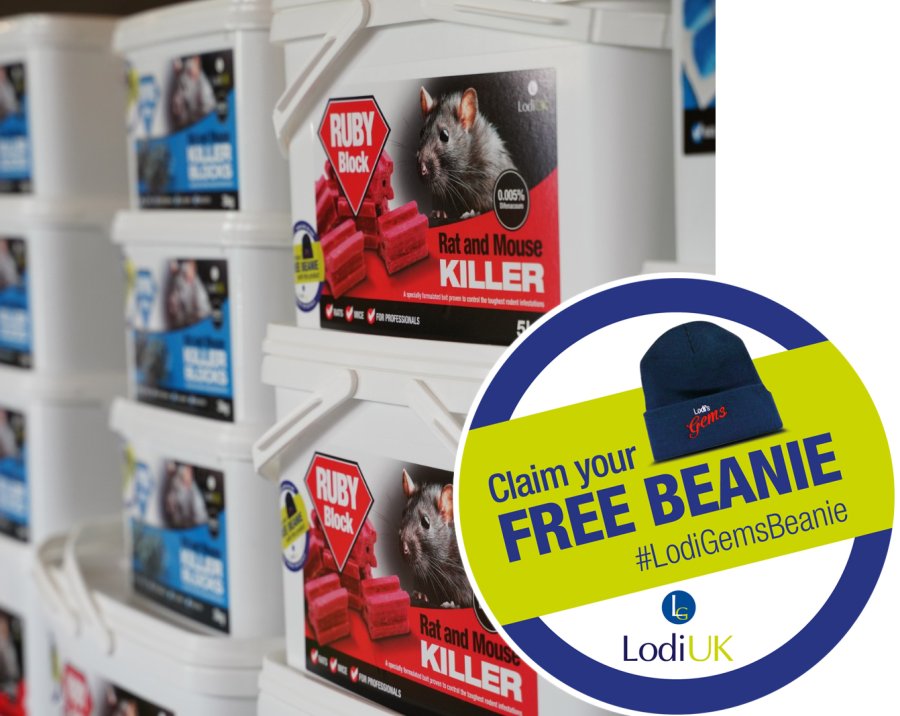
A specialist in pest control and farm hygiene has issued new advice to farmers who are preparing to control rodents this winter.
Dave Reece is technical advisor to Lodi UK and owner of Oakwood Farm Services, and a specialist in pest control.
He says rodent populations start in October with a low population - 5-6 rats or mice - moving onto farms and into buildings which then breed with warmth, shelter and food to create a much larger problem.
Monitoring allows farmers to search out where the rodents are arriving and control the situation more quickly, and if found early, numbers can be controlled significantly more effectively.
Monitoring is essential to effective rodent control
Checking for rodent activity all year round is key to keeping the risk of infestations low, Dave says.
Effective monitoring is more than a day-to-day walk around on a farm to prevent a change going by unnoticed, especially in out-of-sight areas such as the back of buildings.
Most farmers might only notice activity in more open areas which would then indicate a larger problem is building.
Dave advises farmers to carry out a brief inspection each week to check for signs of activity.
He says: "Look out for rat burrows under buildings, loop smears on beams or rafters, rat holes in dirt banks, damaged doors, holes or entry points, runs on the ground between potential feeding areas, droppings in ventilation ducts and next to food, equipment stores, and other areas around the farm.”
He adds innovative products such as Lodi UK’s UV Blocks and UV Paste will aid farmers as a monitoring feed to confirm rodent activity before baiting with Lodi Gems rodenticides.
The new range of UV monitoring baits is also formulated with a UV tracker that causes rodent urine to glow, allowing farmers to trace where the rodents are hiding and control them quickly.
Dave says monitoring rodents in this way is important to comply with the CRRU code of rodent control best practice as well as complying with farm-assured schemes such as Red Tractor.
Avoid fines with effective rodent control
Following best practice with rodent control ensures compliance with government acts, regulation, and farm audits.
For example, under the Clean Neighbourhoods and Environment Act, farmers and waste sites must keep fly and rodent infestations under control otherwise they could be fined up to £50,000.
How do you effectively control rodents with Lodi’s Gems?
Farms are becoming increasingly large with more fields and buildings. Therefore, the scale of the rodent problems is seen to be much greater sometimes requiring up to 40 baiting points to control them effectively.
Rodenticides such as the Lodi’s Gems range is the most successful way to control rodent infestations when they occur, Dave says.
For farmers looking to use Lodi’s Gems rodenticides to manage their rodent populations, there are a few things to know: A few kilos of bait do not resolve the problem when spread out over 40 baiting points.
Farmers should also ensure the back label of the rodenticide is followed detailing how much rodenticide to use in each location.
Bait box placement is key to rodent control
Baiting in the correct locations is essential to control rodents effectively, Dave explains.
When farmers have found an infestation, Dave says to use Lodi’s Gems rodenticides in tamper-resistant bait stations, such as BORA or BETA stations, placed in key areas across the farm such as around buildings, drains, sewers, and feed stores.
Always follow the back-label instructions on what rodenticides may be used where.
Be aware of your surroundings on-farm
The farm is a place of constant change both seasonal and permanent. It’s important to recognise changes which can impact rodent activity on farm and adapt control strategies in terms of monitoring and baiting.
For example, if deciding to move straw or feed storage, consider that this will attract rodents to a new place on the farm.
What if it seems rodents are not taking the bait?
Dave suggests "If it seems rodents are not eating the bait placed down. Check for and remove or block access to other feed sources such as grain stores as this may be the issue.
"Burrow baiting may be an option here, if possible, to control the rodents on their doorstep.”
“In addition, a lot of baiting points with single-feed rodenticides need to be approached with care to understand where the rodent will travel after feeding and possible risks to non-target species.”
Know your actives and formulations
Choose the right formulation for the right needs. Lodi’s Gems rodenticides come in cut wheat, wholegrain, wax blocks, and edible pastes and range from Difenacoum multi-feed actives to single feed Brodifacoum.
Dave says this provides an excellent choice of baits when deciding how to control a rodent infestation.
He advises to “start with Jade (Bromadiolone active) around pigs and poultry as the Jade formulations are more palatable to rodents versus animal feed nearby.
"If no food source is present Ruby (Difenacoum active) can be more suitable as the first rung of the multi-feed ladder of rodenticides.
"Afterwards, look to move to using Sapphire (single feed brodifacoum rodenticide).
All-round rodent control support with Lodi UK
Ask your local merchant for Lodi UK’s wide range of technical guides and digital support including leaflets, safety resources, and video guides to learn how rodent control works best when tailored to your farm. Alternatively, visit www.lodi-uk.com
And following on from the success of last year, Lodi UK are giving away their free Lodi's Gems beanies to thank farmers.
If you did not get a chance to order yours last year, go to www.lodi-uk.com/beanie to order your beanie hat online for free, delivered straight to your door.
